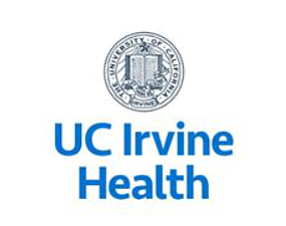Latest EsophyX® Z Fastener Delivery System Significantly Reduces the Number of Steps in the TIF® (Transoral Incisionless Fundoplication) Procedure
REDMOND, Washington – EndoGastric Solutions® (EGS), a leader in incisionless procedural therapy for gastroesophageal reflux disease (GERD), today announced the first use of the recently cleared EsophyX® Z Fastener Delivery System (EsophyX® Z device) during a Transoral Incisionless Fundoplication (TIF®) procedure at UC Irvine Health in Irvine, CA.
Interventional Gastroenterologist Kenneth Chang, MD, executive director of the UC Irvine Health H.H. Chao Comprehensive Digestive Disease Center, performed the TIF procedure using the new EsophyX Z device, which was granted 510(k) clearance by the U.S. Food and Drug Administration (FDA) earlier this month.
“There are certain GERD patients who don’t respond effectively to medical management with proton pump inhibitors,” said Dr. Chang. “Long-term data continue to demonstrate the positive impact the TIF procedure for reflux has in controlling chronic, troublesome GERD symptoms.”
 The TIF procedure using the EsophyX Z device allows physicians to reconstruct the gastroesophageal valve by performing a partial fundoplication, transorally, and securing the gastric tissue with fewer procedural steps.
The TIF procedure using the EsophyX Z device allows physicians to reconstruct the gastroesophageal valve by performing a partial fundoplication, transorally, and securing the gastric tissue with fewer procedural steps.
“We are excited and honored to have Dr. Chang perform the first TIF procedure using the new EsophyX Z device via the TIF 2.0 procedure to treat a chronic GERD patient,” said Skip Baldino, President and CEO of EndoGastric Solutions. “This marks another notable milestone for EGS as we continue to address the significant problem of GERD and focus on filling the treatment gap between medication and more invasive surgery.”
EsophyX Z, which is designed for compatibility with the company’s existing 7.5 mm SerosaFuse® Implantable Fastener cartridges, will enter a limited U.S. release before full commercialization during the summer of 2016. The device will also be used in the American Gastroenterological Association’s STAR Registry, which will provide the first real-world data comparing patient outcomes after traditional laparoscopic surgery and TIF procedure with the EsophyX® device.
Inanimate model demonstrations of the EsophyX Z device took place during Digestive Disease Week (DDW) 2016 annual meeting, last week at the San Diego Convention Center in San Diego, California. New meta-analysis data on the TIF procedure was also presented at the meeting.
About DDW
Digestive Disease Week® (DDW) is the largest international gathering of physicians, researchers and academics in the fields of gastroenterology, hepatology, endoscopy and gastrointestinal surgery. Jointly sponsored by the American Association for the Study of Liver Diseases (AASLD), the American Gastroenterological Association (AGA) Institute, the American Society for Gastrointestinal Endoscopy (ASGE) and the Society for Surgery of the Alimentary Tract (SSAT), DDW takes place May 21-24, 2016, at the San Diego Convention Center, San Diego, CA. The meeting showcases more than 5,000 abstracts and hundreds of lectures on the latest advances in GI research, medicine and technology. More information can be found at www.ddw.org.
About EsophyX® technology
The original EsophyX device was cleared by the FDA in 2007. EGS launched the third generation EsophyX device, the EsophyX Z, in 2015. The technology has continued to evolve and is a clinically backed tool for physician use in the treatment of GERD. The EsophyX technology now enables surgeons and gastroenterologists to use a wider selection of endoscopes — including low profile and larger high-definition models — to treat the underlying anatomical cause of GERD. The EsophyX technology is used to reconstruct the gastroesophageal valve (GEV) and restore its function as a barrier, preventing stomach acids refluxing back into the esophagus. The device is inserted through the patient’s mouth with direct visual guidance from an endoscope.
Indications:
The EsophyX device with SerosaFuse fasteners is indicated for use in transoral tissue approximation, full thickness plication and ligation in the GI tract and is indicated for the treatment of symptomatic chronic gastroesophageal reflux disease in patients who require and respond to pharmacological therapy. It is also indicated to narrow the gastroesophageal junction and reduce hiatal hernia ≤ 2cm in size in patients with symptomatic chronic gastroesophageal reflux disease.
About Transoral Incisionless Fundoplication (TIF®) procedure for reflux
Performed without the need for external incisions through the skin, the TIF procedure offers patients who require an anatomical repair another treatment option to correct the underlying cause of GERD. Studies show that for up to three years after the TIF procedure esophageal inflammation (esophagitis) is eliminated and most patients are able to stop using daily PPI medications to control symptoms.
Over 17,000 TIF patients have been treated worldwide since EsophyX® device clearance in 2007. More than 60 peer-review papers from over 50 centers have been published documenting consistent outcomes on over 1,100 unique study patients. For more information, visit www.GERDHelp.com.
NP02450-01A/-07A
